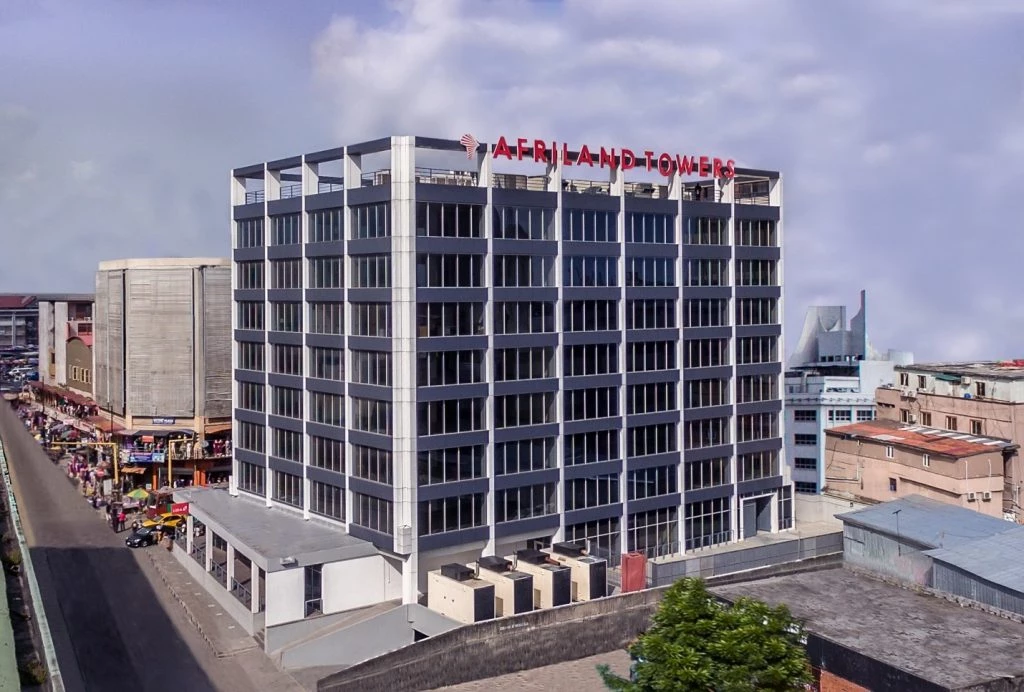By Kayode Odebiyi, Director, Property Development, Afriland Properties Plc.
Reflecting on the past two decades, the COVID-19 pandemic has been the most catastrophic disruptor to the semblance of order the world was accustomed to. Yet, despite the market and economic fallouts across different sectors, the African real estate market has remained resolute and steadfast in achieving year-on-year growth. This can be attributed to various factors: rural to urban migration, as well as emigration to cities and more developed nations; the latter representing hope and the promise of new opportunities for people in search of better education, employment, and better social services. It is no different in Africa, where more than 40,000 people move to urban centres daily in search of prosperity.
The post-pandemic reality
A significant and positive outcome of the pandemic in the growth of the residential real estate space is the remote work or work-from-home trend that was prevalent during the pandemic and has now become a norm that presents opportunities for more organisations to adopt permanent remote or hybrid work structures. Consequently, the once luxurious skylines and city centre buildings, the trademark for fast-growing businesses and multinationals, are being swapped in favour of working from just about anywhere: an office without a permanent address.
This decline in interest in commercial buildings has negatively affected market activities, directly impacting revenue that could have been recapitalised into more projects.
In Nigeria, vacancies within the office space markets have risen to 36%. The South African real estate market faces a similar problem. Sandton, South Africa’s largest business node, has seen office space vacancies rise to 22.5%. The rate in Cape Town has also doubled to 20%, and office space vacancy rates in Ghana are as high as 25% for A-grade and B-grade properties.
The domino effect has put even more pressure on the already inadequate housing demand in Africa, as the continent faces a shortfall of at least 51 million housing units. Nigeria (18 – 22 million units), Kenya (2 million units), Ghana (1.7 – 2.6 million units), Uganda (1.7 – 2 million units), South Africa (2.5 million units), and Ethiopia (1.2million units), are some of the countries with numbers that speak to a dire need for creative solutions to increase the housing stock.
The effects of the current global inflation trend
Densely populated urban cities are experiencing a spike in the cost of residential rent. Rents in Lagos have gone up by 22% since 2019. Metropolitan areas in South Africa, like Cape-town, have seen a 13% rent cost increase. The Eastern part of the continent is not left out, with Nairobi also experiencing a relative increase of 5%. These are repercussions of a massive shortfall in affordable housing units across the continent. In an environment of unprecedented inflation, stimulated by various factors, including the ongoing war between Ukraine and Russia, the continent’s stakeholders are mobilising quickly to address affordable housing challenges. For instance, Egypt has reduced the cost of residential land acquisition and is currently experiencing a boom in the real estate market, with an 8% growth in the sector and market stability for the first time in 15 years.
By offering tax rebates on construction costs, other countries are encouraging the development of affordable housing and policies to attract FDIs. Ghana reported an inflow of $2.65 billion in FDI for 2020, the real estate sector being among the most attractive, with a phenomenal average annual yield of 10%. The Ghanaian government has continued the trend with its ‘Homecoming’ campaign attracting diaspora Africans to invest in homes in Ghana’s upcoming urban areas.
The International Finance Corporation, and Chinese multinational construction and engineering company (CITIC Construction) launched a $300 million investment platform, CITIC (Africa) Holding Limited, to develop affordable housing in multiple African countries. The platform will partner with local developers and provide long-term capital to develop 30,000 homes over the next five years. IFC estimates that each housing unit will create five full-time jobs – resulting in nearly 150,000 new jobs.
Initiatives like these send a clear indication of what should be done to provide solutions to housing problems. As Africa becomes more urbanised, governments must shake hands with the private sector to meet these critical needs.
Adopting a sustainable solution
Affordability is the key to unlocking and sustaining Africa’s housing markets. Nigerian real estate giants Afriland Properties Plc recently partnered with the Lagos State Government on Falomo Towers, a project that will bring 174 housing units into the market. The developer has commenced the construction of Afriland Estate in Nigeria’s capital city, Abuja, a project expected to provide over 100 housing units for residential purposes.

Uzo Oshogwe, the MD/CEO of Afriland Properties, however, cites various militating factors working against the provision of affordable housing on the continent and particularly in Nigeria. Overbearing tax policies, fluctuating foreign exchange and lack of access to long-term finance for developers and prospective homeowners are some of the issues raised.
Governments at all levels have a part to play in setting the scene for sustainability by factoring affordable housing into the formulation and implementation of policies. They should also develop trade and investment regulations that will increase the inflow of FDI to the sector and incentivise local players, increasing access to more cost-effective financing models.
Innovation and creativity
Private investors in the sector must innovate, using alternative building designs to significantly cut down the cost of development. Across the world, builders are taking an interest in the use of cost-effective alternative building materials that are environmentally friendly. These include recycled aluminium, sand and glass, green roof, upcycled shipping containers, compressed fibre cement sheets, corten steel, fibreglass, reclaimed metal, and many other recyclable materials.
The introduction of dry construction technology using materials like galvanised steel, fibre cement, precast concrete, and gypsum boards has seen building projects completed within three months.
Furthermore, the adoption of Alternative Building Materials (ABM) has been successfully implemented in several cities in Europe and Asia using materials like bamboo, rammed earth, strawbale, supplementary cementitious materials, cork, mycelium, hempcrete, ferrock, and papercrete. An example of such a project is the 3D-printed Gaia House by WASP in Italy, using waste from rice production and straw as insulation for the structure. The same technology has also been used in India to develop single-storey residences within five days. Other projects include the Jill Strawbale House, The Higo, Hy-Fi Tower, The Acre, and The EcoARK, amongst many others.
Apart from economic benefits, ABMs also have a positive environmental impact, reducing CO2 emission by 36-530kg, by simply switching out wood and steel for more environmentally friendly materials.
The way forward
The role of governments and the private sector cannot be overemphasised in creating a sustainable future for the real estate market in Africa. Governments, working with the private sector, must adopt an adequate regulatory framework for housing finance. Equally, land titling systems and property rights enforcement to ensure robust security and collateral should be adequately outlined.
The financing role of the government must be clearly defined and should support market creation with an agreement on the division of risks and financing between the public and private sectors, allowing for blended financing to accelerate housing development.
Capital markets development must be accelerated to provide instruments needed to support housing finance. There is also an increasing need for local currency long-term financing and the development of secondary mortgage finance markets. These markets can help smoothen default and financing risks and provide banks with an outlet to trade housing loans to manage exposure. With a more developed housing finance market, financial institutions can begin offering longer-term financing, which will also support demand.
Finally, the primary driver of stability, expansion, and sustainability will be the use of alternative construction materials and technologies. With a fast-rising population, real estate may be a catalyst for economic growth, contributing to GDP through private investments and housing service consumption.
—


